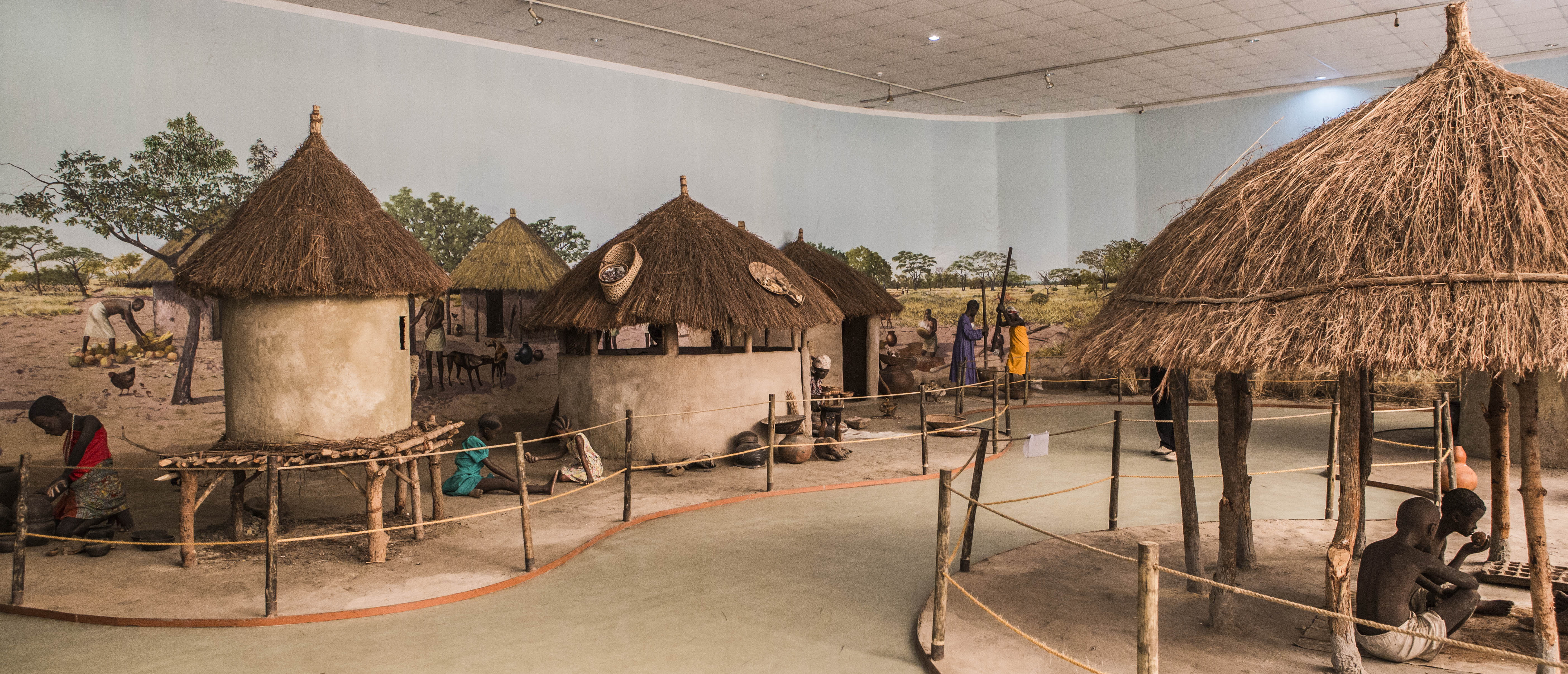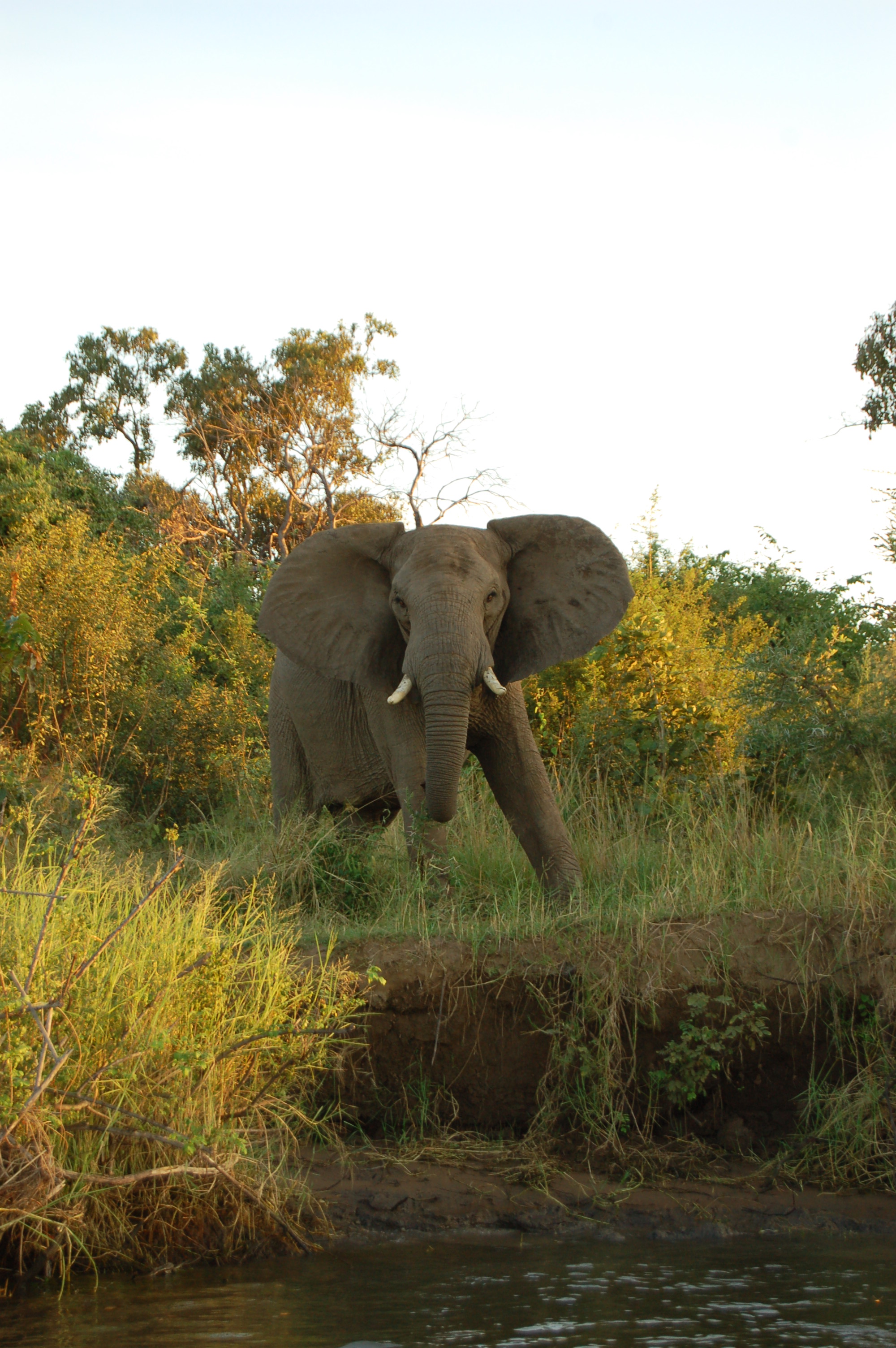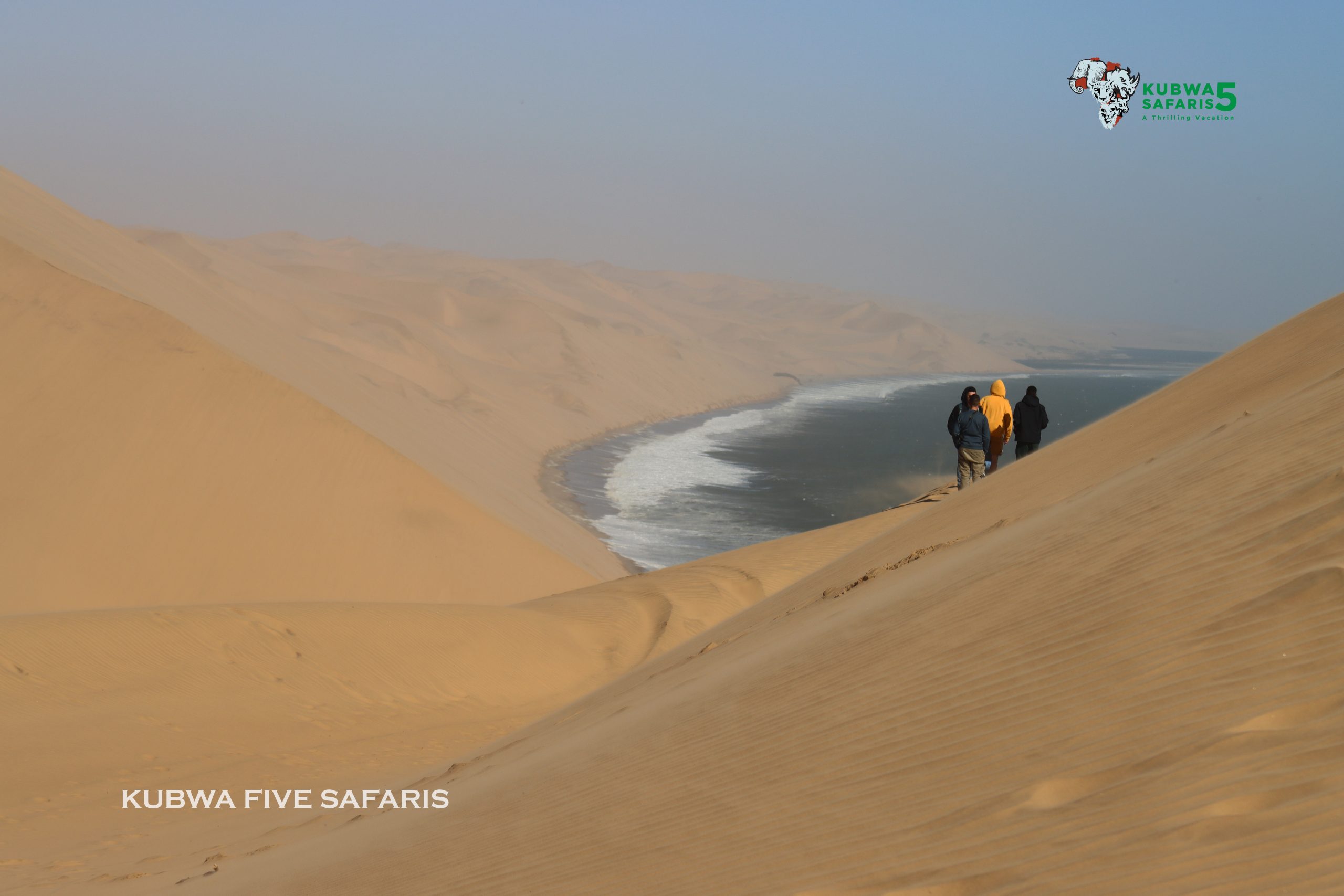Table of Contents
Top 5 Best Museums In Zambia
The following are the top 5 best museums in Zambia and they include; Livingstone Museum, Lusaka National Museum, Choma Museum and Crafts Center, Moto Moto Museum (Mbala) and Copperbelt Museum.
Nestled in the heart of southern Africa, Zambia is a land of untamed wilderness, cascading waterfalls, and a cultural tapestry as diverse as its stunning landscapes. While many travelers are drawn to Zambia’s natural wonders, there’s another facet of this remarkable nation that often goes unnoticed but is equally captivating – its extraordinary museums. These hidden treasures house a wealth of history, art, and heritage, offering a unique glimpse into Zambia’s rich past and promising future.
In this article, we invite you to embark on an exciting journey through the top 5 museums in Zambia. Each of these institutions unveils a unique aspect of the nation’s history, culture, and art. From the echoes of great explorers to the vibrant pulse of contemporary Zambian artists, these museums are an opportunity to delve deeper into the multifaceted identity of this extraordinary country.
As we traverse through these museums, you’ll discover that they are not mere repositories of artifacts; they are living, breathing testimonies to the indomitable spirit of Zambia, preserving the legacy of its pioneers and celebrating the creativity of its people. So, fasten your seatbelts and get ready for a journey that will reveal the hidden gems of Zambia’s museum scene, all waiting to enchant and enlighten the curious traveler.
1. Livingstone Museum (Livingstone)
Our journey through Zambia’s museum wonders begins with the Livingstone Museum which is among major museums in Zambia. Its located in Livingstone, a town on the southern border. Named after the legendary Scottish explorer, Dr. David Livingstone, this museum encapsulates the spirit of adventure that characterized his expeditions through Africa. Established in 1934, it is one of the oldest and most revered museums in Zambia.
The Livingstone Museum is a treasure trove of artifacts and exhibits that reveal the rich history, culture, and natural heritage of Zambia. Visitors can explore ethnographic displays, archaeological findings, and even a remarkable collection of David Livingstone’s personal possessions, such as journals and letters. One of the most striking exhibits is the ethnography section, which showcases the diversity of Zambia’s indigenous cultures, their art, rituals, and traditional way of life.

The museum also has an impressive collection of contemporary Zambian art and crafts, offering a glimpse into the nation’s evolving artistic expression. Whether you’re interested in history, anthropology, or art, the Livingstone Museum is a must-visit destination that will leave you enriched and enlightened.
2. Lusaka National Museum (Lusaka)
Our journey now takes us to Zambia’s bustling capital, Lusaka, where the Lusaka National Museum offers a more contemporary perspective on Zambia’s history and culture. Established in 1996, this museum is a reflection of modern Zambia’s development and aspirations.
The Lusaka National Museum presents a comprehensive overview of Zambia’s history, from pre-colonial times to the nation’s fight for independence and its development as a sovereign state. The museum also showcases the diversity of Zambia’s contemporary culture and the nation’s ambitious plans for the future. Visitors can explore a wide range of exhibits, from historical documents and photographs to contemporary art and cultural performances.

One unique feature of the Lusaka National Museum is its dedication to promoting scientific knowledge and research. The museum collaborates with local and international institutions to conduct archaeological excavations and scientific studies, making it a dynamic hub for both history and science enthusiasts.
3. Moto Moto Museum (Mbala)
Our next stop takes us to Moto Moto Museum, located in the town of Mbala. Established in 1974, this hidden gem is known for its remarkable collection of Zambian art and culture. The museum’s name, “Moto Moto,” means “The Fire Fire,” which is a local expression signifying something that’s simply the best. And indeed, this museum lives up to its name.
Moto Moto Museum focuses on the contemporary art scene of Zambia. It houses a superb collection of paintings, sculptures, and ceramics by renowned Zambian artists. It provides a platform for artists to share their perspectives on Zambian life, history, and culture, making it an essential destination for art enthusiasts.
One of the highlights of this museum is its rotating exhibitions, which often feature works by emerging and established artists. The museum serves as a hub for the Zambian art community, fostering creativity and preserving the country’s artistic heritage.
4. Choma Museum and Crafts Center
Our journey through Zambia’s museums now takes us to the serene town of Choma, the capital of Zambia’s Southern Province. The Choma Museum and Crafts Center offers a unique perspective on the culture and history of this region.
Established in 1974, the Choma Museum is dedicated to preserving the traditions, art, and heritage of the people of Southern Zambia. Visitors can explore exhibits featuring traditional tools, musical instruments, and artifacts, providing a rich insight into the local way of life.
What sets Choma Museum apart is its Crafts Center, which supports local artisans and craftsmen. Here, you can watch skilled artists create intricate crafts, and you can also purchase these unique, handcrafted items as souvenirs. The museum’s commitment to empowering the local community through art and culture makes it a fascinating and enriching destination.
5. The Copperbelt Museum
Our final museum takes us to Zambia’s Copperbelt Province, the Copperbelt Museum is a tribute to the nation’s mining heritage. Established in 2001, this museum is a journey into the world of miners, showcasing their struggles and triumphs. It’s a living connection between the industrial past and the local community, collecting stories and preserving oral histories.
With a diverse collection of artifacts and engaging educational programs, the museum offers insight into the mining industry’s impact on Zambia’s economy and society. It addresses the challenges and highlights sustainability, making it a platform for meaningful dialogue. More than just a museum, it’s a celebration of resilience, culture, and the vibrant traditions of the Copperbelt Province.
Other Places to Visit In Zambia.
While Zambia’s museums offer a captivating window into the nation’s rich history and culture, the treasures of this remarkable country extend far beyond the museum walls. In this segment, we venture beyond curated exhibits to explore the unspoiled natural wonders, wildlife havens, and vibrant urban centers that define Zambia’s diverse landscape. From the thunderous cascades of Victoria Falls to the pristine wilderness of national parks and the cultural vibrancy of its capital city, Zambia has something to offer every traveler seeking adventure, serenity, and discovery.
Join us as we step outside the world of artifacts and into the world of untamed beauty. Our journey takes us to the roaring waters of Victoria Falls, where misty rainbows embrace the soul, and then into the wild heart of national parks such as South Luangwa, Kafue, and Lower Zambezi, where nature’s most splendid creatures await. We’ll also meander through Lusaka, Zambia’s lively capital, and embrace the harmony of Lake Kariba’s serene shores. Zambia’s natural treasures are boundless, and this blog will guide you through their magnificence, providing you with insights and inspiration for your next adventure.
Victoria Falls: The “Smoke That Thunders”
Undoubtedly, no visit to Zambia is complete without witnessing the awe-inspiring Victoria Falls. Known as “Mosi-oa-Tunya” in the local language, which translates to “the smoke that thunders,” this UNESCO World Heritage site is one of the world’s most spectacular natural wonders. The falls, shared with Zimbabwe, are a jaw-dropping, mile-long curtain of cascading water that plunges into a deep gorge, creating a mist that can be seen from miles away. Visitors can explore the surrounding rainforest, embark on thrilling adventures like bungee jumping, or simply stand in wonder at the sheer power and beauty of this iconic landmark.

South Luangwa National Park
For wildlife enthusiasts and safari aficionados, the South Luangwa National Park is a hidden gem that promises an unforgettable adventure. Located in eastern Zambia, this pristine wilderness is home to an astounding variety of wildlife, from elephants and lions to leopards and hippos. What sets South Luangwa apart is its walking safaris, allowing you to get up close and personal with the animals in their natural habitat. The park’s remote and unspoiled landscape offers a unique safari experience, making it a top destination for those seeking a genuine encounter with Zambia’s wildlife.
Kafue National Park
Kafue National Park is one of Zambia’s best-kept secrets and the largest national park in the country. Situated in the western part of Zambia, it’s a haven for wildlife enthusiasts seeking a more secluded and authentic safari experience. Kafue is home to a wide array of animals, including big cats, antelopes, and abundant bird species. It’s also famous for its river-based safaris, where you can spot crocodiles, hippos, and a dazzling array of aquatic life. For those looking to escape the crowds and immerse themselves in Zambia’s unspoiled wilderness, Kafue National Park is the ultimate destination.
Lower Zambezi National Park
Nestled along the mighty Zambezi River, the Lower Zambezi National Park offers a unique blend of pristine landscapes and breathtaking water-based activities. This park is a paradise for canoe safaris, where you can paddle along the riverbanks and witness elephants, buffalo, and a variety of birdlife. In addition to wildlife encounters, the park provides opportunities for fishing, boat cruises, and game drives. Whether you’re a nature enthusiast or simply seeking relaxation against the backdrop of Zambia’s iconic river, Lower Zambezi National Park is truly a sight to behold.

Lusaka
Zambia’s capital city, Lusaka, offers a vibrant urban experience that beautifully complements the nation’s natural wonders. From bustling markets like Soweto Market, where you can shop for local crafts and delicious street food, to the quirky Lusaka National Museum that delves into Zambia’s history, Lusaka provides a taste of contemporary Zambian life. The city also boasts lush green spaces like the Lusaka National Park and the Lilayi Elephant Nursery, offering a refreshing escape from the urban bustle.
Lake Kariba
Lake Kariba, one of the largest man-made lakes in the world, is a water lover’s paradise. Located on the border between Zambia and Zimbabwe, this stunning body of water offers a host of activities, including boat cruises, fishing, and water sports. The lake is also known for its breathtaking sunsets, and the nearby Matusadona National Park allows for fantastic game viewing, with the chance to spot elephants, lions, and a rich array of birdlife. Whether you’re seeking adventure on the water or simply want to unwind in a tranquil lakeside setting, Lake Kariba is an enchanting destination.
These are just a few of the many extraordinary places to explore in Zambia, each offering a unique and enriching experience that adds depth and diversity to your journey through this captivating nation.
Getting to Zambia
Getting to Zambia is relatively straightforward, with a few key transportation hubs serving as entry points to this stunning African nation.
By Air
The most common and convenient way to reach Zambia is by air. Kenneth Kaunda International Airport in the capital city, Lusaka, and Harry Mwanga Nkumbula International Airport in Livingstone are the primary international gateways. You can book direct flights to these airports from major cities worldwide. Additionally, there are other regional airports in Zambia that you can use for domestic travel. Once you arrive, you can easily access various destinations within the country through domestic flights or ground transportation.
Overland Travel
If you’re feeling adventurous or are traveling from neighboring countries, you can consider overland travel. Zambia shares its borders with several countries, including Zimbabwe, Namibia, Botswana, Tanzania, and Malawi. You can use buses or private vehicles to cross these borders. Just ensure you have the necessary visas and documentation for entry. The road networks connecting Zambia to its neighboring countries are well-maintained, making overland travel a viable option for exploring the region.
Accommodations in Zambia
From luxurious safari lodges where you can fall asleep to the sounds of the wild, to eco-friendly treehouses perched amidst lush canopies, Zambia’s accommodations cater to a wide spectrum of preferences and budgets. Join us on a journey as we unveil the diverse range of lodging options that await you in Zambia, ensuring your stay in this captivating country is as unforgettable as the landscapes that surround it. Whether you seek an immersive wilderness experience, the embrace of luxury, or the warmth of local hospitality, Zambia’s accommodations are ready to welcome you.
Safari Lodges
When exploring the wild beauty of Zambia, there’s no better way to immerse yourself in nature than by staying at one of the country’s many safari lodges. Nestled in the heart of national parks and game reserves, these lodges offer an authentic African experience. Wake up to the calls of the wild and enjoy your morning coffee with a view of elephants wandering nearby. Safari lodges come in a range of options, from rustic luxury to more budget-friendly choices, making it accessible for all types of travelers. It’s the perfect way to get up close and personal with Zambia’s incredible wildlife while still enjoying the comforts of a well-appointed room.
Eco-Friendly Treehouses
For a truly unique and eco-conscious experience, consider booking a stay in one of Zambia’s treehouses. These accommodations are often perched high above the ground amidst lush canopies, offering a serene escape from the hustle and bustle of city life. Zambia’s treehouses blend seamlessly with their natural surroundings, providing a peaceful and sustainable stay. Imagine falling asleep to the gentle rustling of leaves and waking up to the melodious chirping of birds. Many of these treehouses are equipped with modern amenities, ensuring your comfort while respecting the environment. Staying in a treehouse is a wonderful way to experience Zambia’s rich biodiversity and connect with nature in a meaningful way.
Luxury Hotels and Resorts
Zambia boasts a selection of luxury hotels and resorts, particularly in cities like Lusaka and Livingstone. These establishments offer top-notch amenities, world-class dining, and stunning views. They are perfect for travelers who prefer a high level of comfort and convenience.
Guesthouses and Bed & Breakfasts
For a more intimate and homey experience, consider staying at one of Zambia’s guesthouses or bed and breakfasts. These accommodations provide a personal touch, often with friendly hosts and a cozy atmosphere. It’s an excellent way to immerse yourself in local culture and get insider tips from your hosts.
Camping and Bush Camps
If you’re an adventurous traveler, Zambia offers excellent camping opportunities. Many national parks and game reserves have designated camping sites where you can pitch a tent and connect with nature. Additionally, some operators offer guided bush camps for a more immersive wilderness experience.
Budget Lodges and Backpacker Hostels
Zambia caters to budget-conscious travelers with a range of affordable lodges and backpacker hostels. These are ideal for backpackers and those looking to minimize expenses while still enjoying a comfortable place to stay.
The Best Time to Visit Zambia
Dry Season (May to October)
Zambia’s dry season, spanning from May to October, is a wildlife enthusiast’s dream. With thinner vegetation, it’s the ideal time for safaris, offering excellent wildlife viewing. Victoria Falls is also a must-see during this period as the reduced water levels reveal its grandeur. Expect pleasant weather, warm days, and cool nights.
Green Season (November to April)
If lush landscapes, birdwatching, and fewer crowds appeal to you, the green season, from November to April, is your best bet. The land transforms into a vivid green paradise, attracting migratory birds. This season offers lower accommodation rates and a unique, serene atmosphere.
Shoulder Season (April and November)
April and November present a balanced experience, with moderate rainfall and fewer tourists. These months offer an excellent compromise between the dry and green seasons. Photography enthusiasts will appreciate the unique blend of landscapes during the shoulder seasons, making it a perfect time for capturing Zambia’s beauty.
Frequently Asked Questions
Q: Is Zambia a safe destination for tourists?
A: Yes, Zambia is generally a safe country for travelers, but it’s essential to take standard precautions.
Q: What’s the best time to visit Victoria Falls in Zambia?
A: The ideal time to visit Victoria Falls is during the dry season from May to October for the best views.
Q: Do I need a visa to enter Zambia?
A: Most nationalities require a visa, which can often be obtained upon arrival at the airport or in advance from a Zambian embassy.
Q: Are there opportunities for wildlife safaris in Zambia?
A: Yes, Zambia offers exceptional wildlife safaris in its national parks and game reserves, with a chance to see the Big Five.
Q: What’s the currency in Zambia, and are credit cards widely accepted?
A: The Zambian Kwacha is the local currency, and credit cards are accepted in larger cities but may not be widely used in rural areas.
Q: Can I drink tap water in Zambia?
A: It’s recommended to drink bottled or purified water to avoid waterborne illnesses.
Q: What languages are spoken in Zambia?
A: English is the official language, but Bemba, Nyanja, and other local languages are widely spoken.

